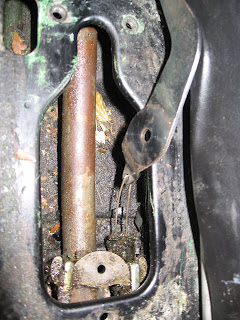



Thank you, Ryan!
Film Review: Biography on CNBC, Henry Ford. Aired February 20th, 2012
Background: Henry Ford, easily the most well-known name in automotive history, was born July 30th, 1863 to live a long life of achievement and has gone down in history as an automotive legend. CNBC’s biography mainly focused on the later years and hardships Henry faced during his life. Before starting the Ford Motor Co. in 1903, Ford farmed and worked at a mill to support his family, Clara Ala Bryant and his only son Edsel Ford (1893). Throughout Ford’s life Clara and Edsel played a large role in some very drastic decisions. Ford worked his way up through the Edison Illumination company to become chief engineer in 1893. In 96 he created his first vehicle: The Quadricycle. In the upcoming years Ford would see the beginning of many companies. Detriot Automobile Company 99’-01’, with William Murphy; Henry Ford Company 01’-02’ Ford resigned due to Henry Leland’s hiring as a consultant. Murphy created Cadillac Automobile Company from these predecessors. Ford then joined forces with Tom Cooper and Alexander Malcomson and formed Ford & Malcoomson, Ltd. The Dodge brothers, John and Horace demanded payment and became investors in the newly reincorporated Ford Motor Company in 1903.
The Biography:
Starting with the Model-T in 1908, CNBC details the steps that were taken along Fords journey through the Model-T’s success and explained how in 1918 half of all cars in America were Ford’s model-T. Overall over 15 million were produced. This record stood for almost half a century. Historian Robert Casey was featured in this biography and further discussed the Tin Lizzy and ford’s relationship with his son Edsel. He goes on to explain how in 1927 the Model A was produced with a V6 but due to the depression production halted in 1931 with plant shutdowns. Throughout the production of these vehicles Ford was made famous for his $5 workday ($120 in today’s value). In 1932 Ford supported Herbert Hoover. March 7th 1932 “Marches on Ford” left four workers shot dead by the Dearborn Police Department and Ford’s security guards. Over 60 people were injured from gunshots and riot wounds, one more died months later from complications. As mentioned earlier Clara Ala Bryant, Henry’s wife, spoke up and put an end to the violence. At her command Ford was now a Union shop in 1941. David Moor was interviewed on the topic of working for Ford: “It was like hell” working with people looking over your shoulders the ‘star men’ managers.
CNBC does its best to inform the viewers of Fords family life. They go into the details of his relationship with his only son, Edsel Ford II. Henry wanted Edsel to be tougher and more assertive, they said. During the time of WWII, Henry Ford’s V8 Ford Triumph was the top vehicle in the states. He received many thanks from famous people including Salinger, and Bonnie & Clyde, on the handling and supreme speed and acceleration of the vehicles. The Biography finishes with more of a somber mood, explaining the later years of his life, and how Ford changed when his son Edsel died at 49 from a stroke. Ford was 80 and still running the company. Ford continued to do so until he was too fragile and Clara his wife encouraged him to pass the company on to his grandson Henry Ford II in September 1945. Ford Passed away in 1947 at the age of 83. A cerebral hemorrhage was the cause. Some 15,000 people walked by his casket the day of his funeral, roughly 5000 and hour. Over 7 million employees took part in some type of memorial act. Without a doubt, Henry Ford changed the course of history and will forever be remembered.


















































